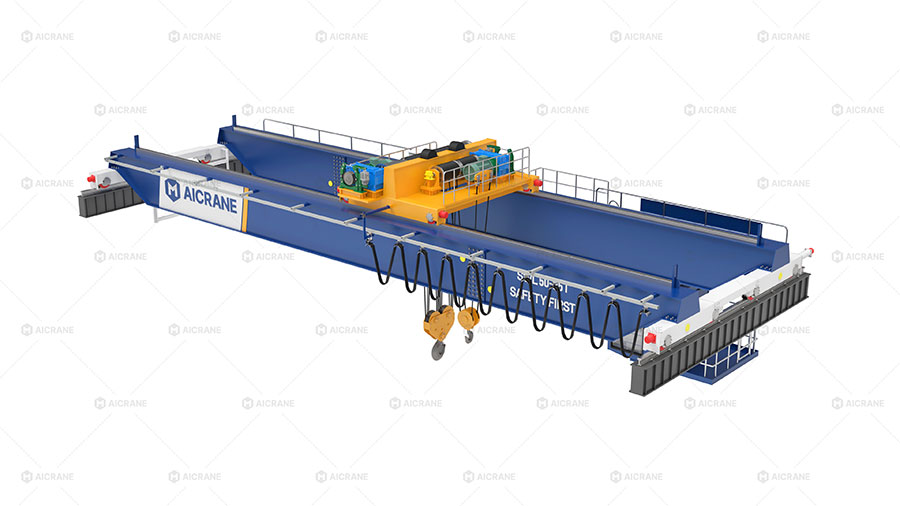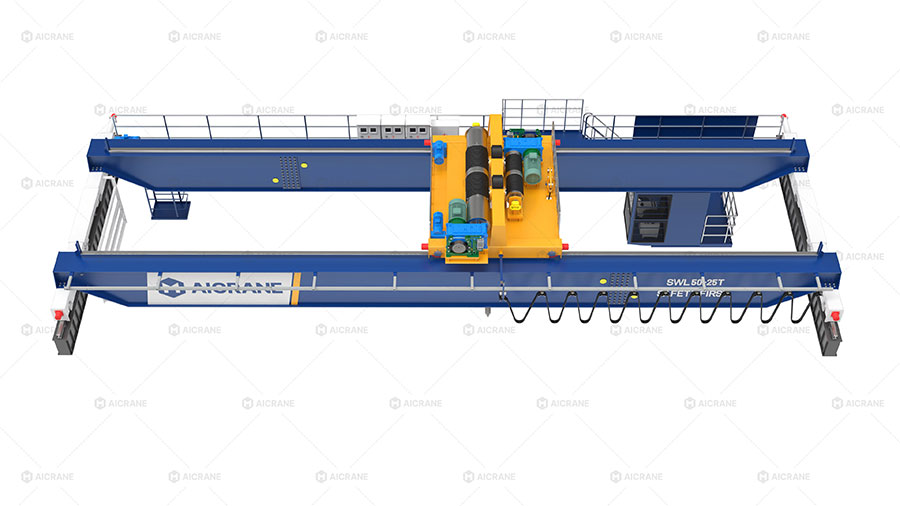Bridge cranes are pivotal in industrial operations where the lifting and transportation of heavy materials are routine. Among these, the 50-ton bridge crane strikes a balance between capacity and flexibility, making it ideal for applications across manufacturing plants, steel mills, shipyards, and warehouses. A key evolution in modern bridge crane design is the incorporation of modular structural components, which dramatically enhances the crane’s versatility, scalability, and ease of maintenance. This article delves into the integration of modular structural components in 50-ton bridge cranes, exploring the benefits, design strategies, and real-world applications that drive this innovative engineering trend.

Understanding Modular Structural Design
A modular structure refers to an approach where individual components or subsystems are designed as independent units that can be assembled, replaced, or upgraded without affecting the overall integrity of the crane system. In the context of a 50 ton bridge crane, these modular components typically include:
-
Main girders
-
End trucks
-
Trolley and hoist assemblies
-
Drive systems
-
Electrical panels and control units
-
Safety mechanisms and platforms
Each of these elements can be engineered as a standardized or customizable module, allowing crane systems to be tailored to specific customer requirements while maintaining manufacturing efficiency.
Advantages of Modular Structural Integration
1. Enhanced Flexibility and Customization
The modular nature of the structural design allows bridge crane manufacturers and end-users to configure cranes according to unique operational needs. For example, a 50-ton crane used in a shipyard may require a longer span and corrosion-resistant materials, while one in a steel processing plant may need higher lifting speeds and specialized hooks. Modular components make it possible to customize these attributes without having to design the crane from scratch.
2. Simplified Assembly and Installation
A traditional crane might require extensive on-site welding and alignment, but modular bridge cranes are pre-engineered with bolt-on components that reduce on-site labor and construction time. This is particularly advantageous in remote or constrained environments where access to heavy equipment and skilled labor may be limited.
3. Streamlined Maintenance and Repair
Downtime is a costly concern in heavy industries. With modular structural components, parts such as the end trucks or hoist modules can be replaced independently. For instance, if a gear motor fails, only that specific module needs to be replaced or repaired, rather than overhauling the entire drive system. This drastically shortens maintenance intervals and improves uptime.
4. Scalable and Upgradeable Systems
Modular cranes are future-proof. Users can upgrade or expand their 50-ton crane systems as operational demands evolve. Whether it’s increasing the crane span, enhancing control systems, or integrating IoT-based diagnostics, modularity enables incremental improvements without disrupting the whole system.

Key Modular Components in 50 Ton Bridge Cranes
1. Main Girders
Main girders are critical load-bearing components and can be fabricated in modular sections. In double girder overhead bridge crane designs, modular girders can be designed with splice joints for easy transportation and assembly. The use of box-type or I-beam configurations depends on the application, and these are often manufactured with precision to facilitate interchanging or upgrading sections as needed.
2. End Trucks
End trucks house the wheel assemblies and are responsible for the crane’s movement along the runway. Modular end trucks are preassembled with gearboxes, motors, and wheel blocks, simplifying integration. High-quality designs include quick-connect electrical plugs and bolt-on mechanical interfaces.
3. Trolley and Hoist Assembly
The trolley and hoist mechanism is often supplied as a self-contained module, complete with lifting motor, brake, drum, and wire rope. This modular unit can be easily detached and serviced or replaced, minimizing downtime. Advanced trolleys may also include frequency inverters and smart sensors to monitor performance.
4. Electrical and Control Panels
Control systems, including panels, pendant stations, and radio controls, are increasingly being designed as modular kits. This makes it possible to upgrade from basic control to semi-automatic or fully automated operations. Quick connections and plug-and-play designs reduce wiring complexity.
5. Safety and Auxiliary Components
Safety platforms, walkways, fall arrest systems, and maintenance platforms can also be modular. These are crucial for compliance with OSHA or EN standards and are typically bolt-on additions to the crane’s frame, allowing post-installation upgrades without major modifications.
Material Considerations in Modular Crane Components
To support the weight and dynamic loads of a 50-ton capacity, the materials used in modular components must strike a balance between strength, durability, and fabrication ease. Common materials include:
-
High-strength low-alloy (HSLA) steel for main girders
-
Cast steel or forged alloy steel for trolley frames and hooks
-
Tempered and heat-treated materials for gears and pinions
-
Corrosion-resistant coatings for components used in marine or humid environments
Using standardized materials in modular components ensures compatibility and quality across different manufacturing batches and project sites.
Applications and Case Studies
Heavy Manufacturing
In steel fabrication shops, 50-ton bridge cranes are used to handle long and heavy materials. Modular girders enable long spans to be shipped in segments and assembled on-site. Likewise, dual hoist modules can be integrated to allow synchronized lifting of long steel beams.
Power Plants
Power plants often require electric overhead cranes for turbine maintenance and generator lifting. Modular hoist systems with redundant safety features can be installed to facilitate safe and reliable operations, even in high-temperature environments.
Shipbuilding Yards
For shipbuilding, where space is constrained and operations are dynamic, modular end trucks and flexible hoist systems allow crane reconfiguration depending on the ship section being constructed.
Foundries and Smelting Facilities
Here, extreme temperatures and abrasive dust present challenges. Modular trolleys with heat shields and sealed gearboxes can be installed, and control systems can be upgraded for remote operation to ensure operator safety.
Challenges in Modular Integration
While modular designs bring multiple advantages, they also introduce a few technical challenges:
-
Precision Engineering: Misalignments in modular joints can lead to stress concentrations and premature failures. Precision fabrication and alignment are critical.
-
Standardization vs. Customization: Finding the balance between standard modules and tailored needs can be complex. Too much standardization can limit operational flexibility, while excessive customization can defeat the purpose of modularity.
-
Load Path Continuity: Modular structures must be designed to ensure that load paths remain continuous and uninterrupted through the connections. Proper structural analysis using FEA tools is required.
Conclusion
The integration of modular structural components in 50-ton bridge cranes marks a transformative shift in the way heavy lifting systems are designed, manufactured, and maintained. By enabling faster installation, easier upgrades, and cost-effective servicing, modular bridge cranes deliver operational agility in industries where downtime and inefficiency can lead to substantial financial losses.
Looking ahead, the ongoing advancements in digital engineering, materials science, and automation will further optimize modular crane design. For buyers and operators, investing in a modular 50-ton bridge crane not only ensures reliable performance today but also opens the door to smarter, more adaptive operations in the future.